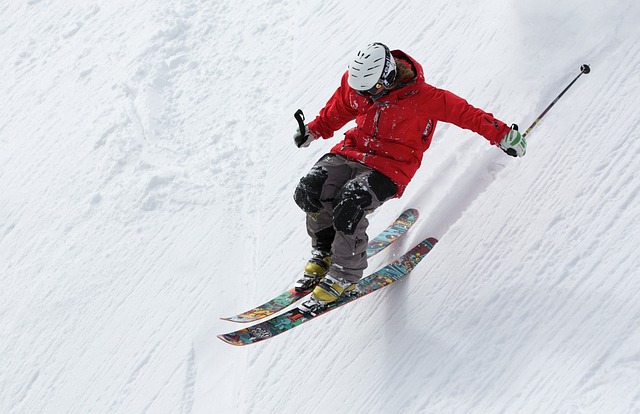Ski Basics: Winter Mountains, Snow, and Equipment
Skiing is a winter activity that combines physical skill, knowledge of snow, and an understanding of mountain terrain. Whether you’re preparing for a casual day on groomed runs or learning to navigate off-piste slopes, a solid grasp of fundamentals—from posture and turn technique to choosing the right ski equipment—helps you enjoy the mountains safely and confidently.

Skiing fundamentals
Learning to ski starts with basic balance, stance, and weight distribution. Beginners are taught a slightly forward stance with knees flexed, hands forward, and eyes looking downhill. Progression typically moves from straight running to controlled turns, linked turns, and then carving. Skiing is a blend of gravity, edge control, and dynamic movement; efficient skiers use subtle weight shifts and rotation instead of relying on muscular force alone.
Practice sessions that focus on short drills—such as hockey stops, falling-leaf maneuvers, and side-slipping—build useful muscle memory. Consider taking a lesson with a certified instructor for faster, safer progression; instructors can quickly identify common errors like leaning back, stiffening, or over-rotating, and provide drills tailored to your skill level.
How snow affects performance
Snow conditions drastically change how skis behave. Hard-packed or icy slopes provide faster speeds and require sharper edge control, while fresh powder cushions turns but demands a more centered stance and wider turn shapes. Wet, heavy snow slows skis and increases fatigue because it creates more drag; conversely, dry powder offers floatation that lets experienced skiers make fluid, dynamic turns.
Being aware of snow structure—corn snow, granular spring snow, or wind-packed layers—also matters for safety and equipment choice. Snow also affects visibility and temperature management: colder, drier snow can reflect more sunlight, while wet snow often comes with fog or low cloud cover. Adjust technique and speed to match the current snow to reduce the risk of falls and injuries.
Winter planning and safety
Preparing for winter skiing includes physical conditioning, checking weather and avalanche forecasts, and packing appropriate layers. Warm-up exercises that focus on hips, knees, and core reduce the chance of strain. Always check local mountain reports for slope status and avalanche advisories if you intend to ski off-piste. Carrying basic safety gear—map, whistle, small first-aid kit, and a charged phone—adds a layer of preparedness for unexpected situations.
Layering clothing allows you to manage moisture and temperature efficiently: a moisture-wicking base layer, insulating mid-layer, and a waterproof outer shell are standard. Don’t forget eye protection and sunscreen; UV exposure increases with altitude and reflection from snow. If skiing in areas with variable conditions, consider taking a safety course that covers avalanche transceivers, probes, and burials for wilderness travel.
Choosing ski equipment
Selecting the right ski equipment starts with the type of skiing you plan to do. All-mountain skis suit a range of groomed and mixed conditions, while powder skis are wider for flotation in deep snow, and carving skis have narrower waists for tight turns on hardpack. Boots should fit snugly without pressure points—comfort and correct flex rating are essential—and bindings must be properly mounted and adjusted by a qualified technician to match your weight, ability, and skiing style.
Other equipment choices include helmets for head protection, goggles matched to light conditions, and appropriate pole length. Regular maintenance—tuning edges, waxing bases, and checking bindings—keeps equipment responsive and safe. Renting is a practical option for occasional skiers or travelers; for frequent skiers, investing in equipment that fits well usually improves comfort and control.
Mountains and terrain selection
Choosing the right mountain and terrain affects both enjoyment and safety. Beginner skiers benefit from gentle slopes, wide runs, and well-marked trails, while intermediate and advanced skiers might seek steeper pitches, glades, or high-alpine descents. Mountain microclimates create variable snow quality across elevations and aspects: north-facing slopes often retain better snow later in the season, while south-facing slopes can become icy or slushy depending on sun exposure.
When exploring unfamiliar mountains, review trail maps and lift operations ahead of time to plan routes that match your ability. Pay attention to signage that marks difficulty levels and closed areas. For backcountry skiing, select terrain with manageable slope angles, good visibility, and reliable partners; always practice route-finding, snowpack evaluation, and rescue techniques before venturing beyond resort boundaries.
Skiing combines technical skill, equipment knowledge, and environmental awareness. By focusing on fundamentals, adapting to snow and winter conditions, choosing appropriate equipment, and selecting terrain that suits your level, you can improve performance and reduce risks while enjoying time on the mountains.






